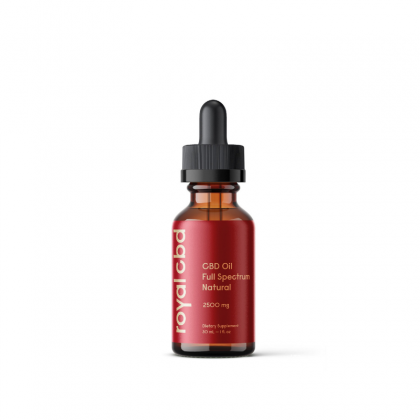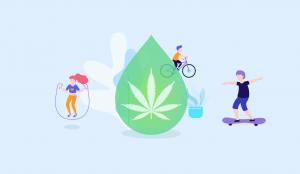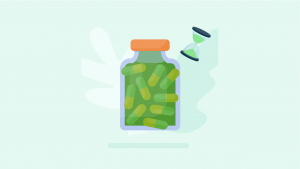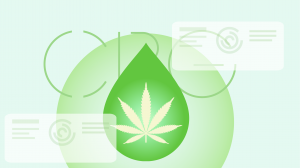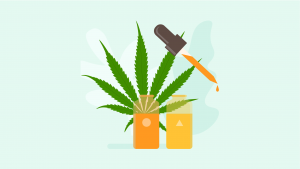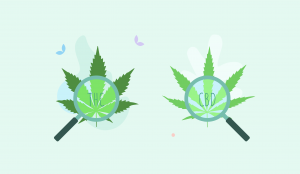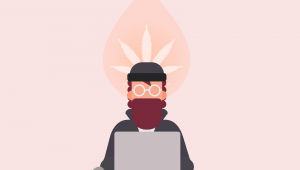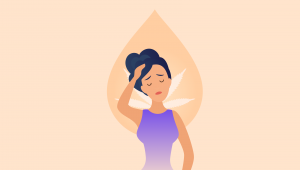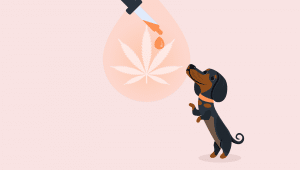| Total CBD: | 500 – 2500 mg |
| Potency: | 16.6 - 83.3 mg/mL |
| Cost per mg CBD: | $0.12 – $0.18 |
| Extract Type: | Full-spectrum |
| THC Content: | <0.3% |
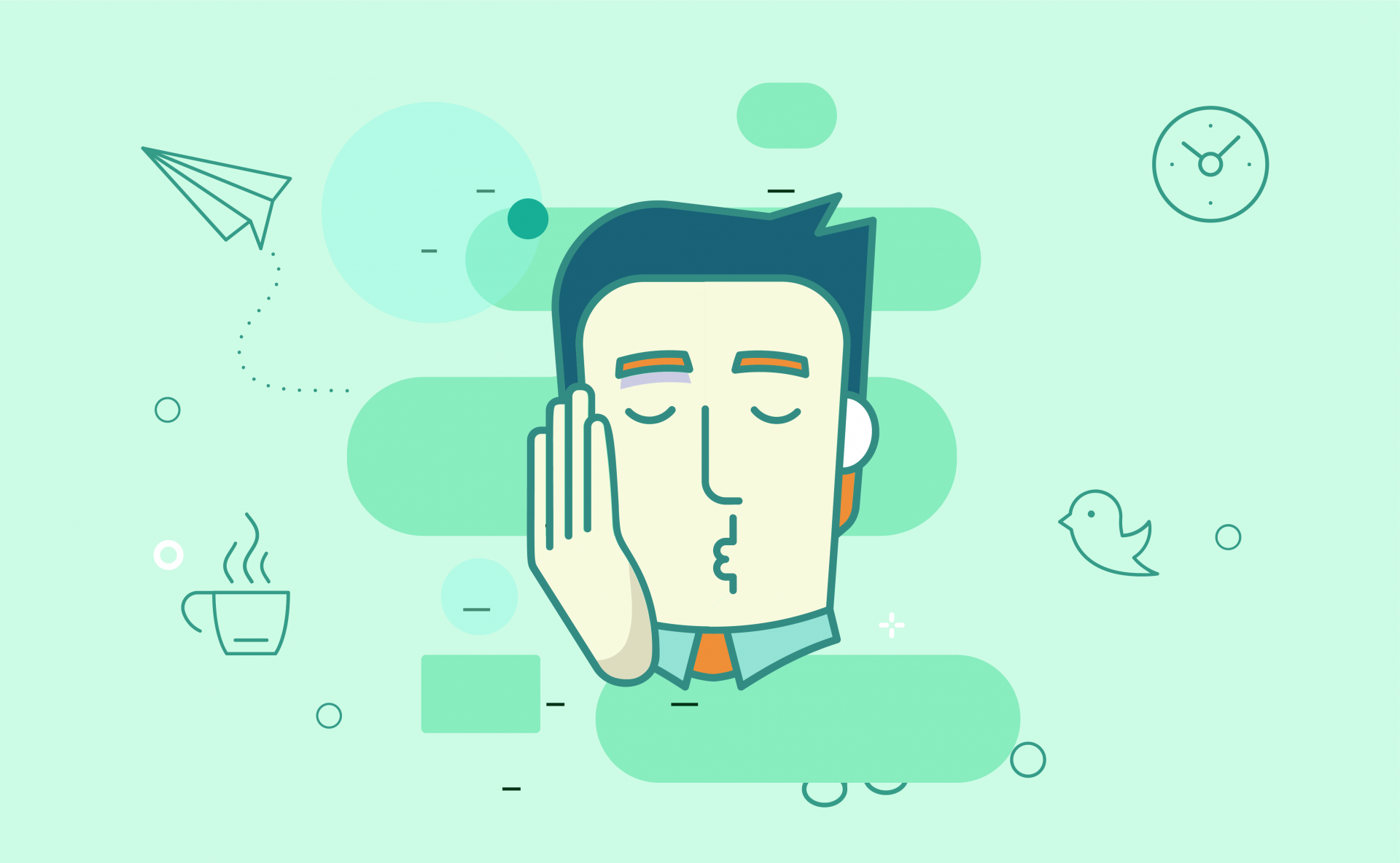
Evidence based
Does CBD Oil Help with ADHD in Children and Adults?
ADD and ADHD are a spectrum of cognitive disorders affecting learning and attention.
How can CBD oil help support these neurological conditions? What’s the dose? Is it safe for children?
Attention deficit hyperactivity disorder (ADHD) is a neurological disorder affecting roughly 1 in 15 children and 1 in 20 adults [5].
The conventional treatment for ADHD is stimulant medications such as Ritalin, Concerta, or Adderall.
While these medications work in the short-term, they come with a long list of potential side effects and there’s no evidence these medications can improve focus or attention long-term.
Many people are reaching for a bottle of CBD oil to help with ADD or ADHD instead — here’s why.
Bottom Line: Using CBD for ADD/ADHD
CBD is used to regulate the neurological system.
More specifically, it supports the balance between the stimulating side of the nervous system (the sympathetic nervous system) and the relaxing side of the nervous system (parasympathetic nervous system).
Through this effect, CBD is able to reduce hyperactivity associated with conditions like ADHD, anxiety, and insomnia.
In the case of ADD (non-hyperactive inability to focus), CBD may only be of mild help directly but may offer more indirect support through other symptoms that are associated with ADD such as insomnia or anxiety.
What is ADD/ADHD?
Attention deficit disorders are common neurological conditions affecting our ability to concentrate on a given task for extended periods of time.
These conditions are often debilitating, making it nearly impossible for some to follow through with even simple tasks at work or school.
Both ADD and ADHD are most common in children, but can also affect adults.
A large meta-analysis published in 2006 found a correlation between low dopamine gene expression and ADHD [2]. This suggests that ADHD is characterized by low dopamine function. Although this is disputed, it does give doctors something to focus on. This is why children with ADHD are often prescribed drugs designed to stimulate dopamine concentrations.
This doesn’t always work, as there are many different factors that contribute to ADHD. The condition is generally thought of as a collection of symptoms rather than a disease (we will discuss this further later).
Symptoms of ADD/ADHD
- Restlessness
- Fidgetiness
- Frequent interrupting
- Frequent talking
- Intrusive habits
- Inability to pay attention
- Insomnia
- Irritability
- Poor self-image
- Forgetfulness
- Mood swings
Some people with ADHD experience what we can call hyperfocus.
This involves periodically entering a state of intense focus — with an inability to pay attention to anything outside of that activity.
This is a rare, contradictory symptom of the condition — but nonetheless, it exists in some people with ADHD.
ADD and ADHD is more common in children. Sometimes, it can be difficult to spot ADHD initially. The earlier the diagnosis, however, the sooner changes to learning structure, diet, lifestyle, and medications or supplements can be made.
Early Signs of ADD/ADHD in Children:
- Trouble paying attention in school or work
- The appearance of not listening
- Failing to complete assigned tasks
- Avoidance of activities that require sustained focus
- Frequently losing items
- Interrupts conversations often

What Causes ADHD?
It’s difficult to pinpoint exactly what causes ADHD. It’s a complicated psychological condition that likely results from a number of different factors.
Even diagnosing the condition is difficult, as there are no lab tests for a conclusive diagnosis. Instead, psychiatrists will use symptoms and various behavioral tests and surveys to make an educated diagnosis — although these are often unreliable, as ADD and ADHD are more of a spectrum of disorders than they are a specific set of symptoms.
Causes of ADHD May Include:
- Genetic factors
- Chemical exposure at a young age
- Diet high in refined carbohydrates
- Allergies
- Traumatic head injuries
- Vitamin B deficiencies
- Zinc deficiency
There are Two Main Types of Attention Deficit Disorders:
Attention deficit isn’t considered a disease — it’s a disorder.
The difference here is more than semantics because it tells us something about the known cause for the condition.
The difference is that a disorder is defined at a behavioral level — its presence doesn’t imply a neurological disease. You can think of disease as referring to physical or functional damage (lowered function).
What this means is ADHD is more of a symptom or quality than it is a diagnosable medical disease. There are multiple different factors that come together to cause ADHD.
ADD and ADHD are usually thought of more as a scale than a box — with ADD on one end and ADHD on the other.
1. Attention Deficit Disorder (ADD)
ADD is considered a milder version of ADHD — but “mild” isn’t quite the right word. For some, this condition can be severe, making it nearly impossible for people to study effectively.
2. Attention Deficit Hyperactivity Disorder (ADHD)
This form of the disorder involves hyperactivity.
This is generally caused by changes in neurotransmitter levels. Although this may be true, it’s far more complex than that.
Some research suggests ADHD is caused by low dopamine, while some suggest high dopamine causes the condition.
Additionally, there’s evidence that other neurotransmitters may be involved — such as serotonin, norepinephrine, and GABA.
This is why ADHD is better regarded of as a symptom, rather than a disease.
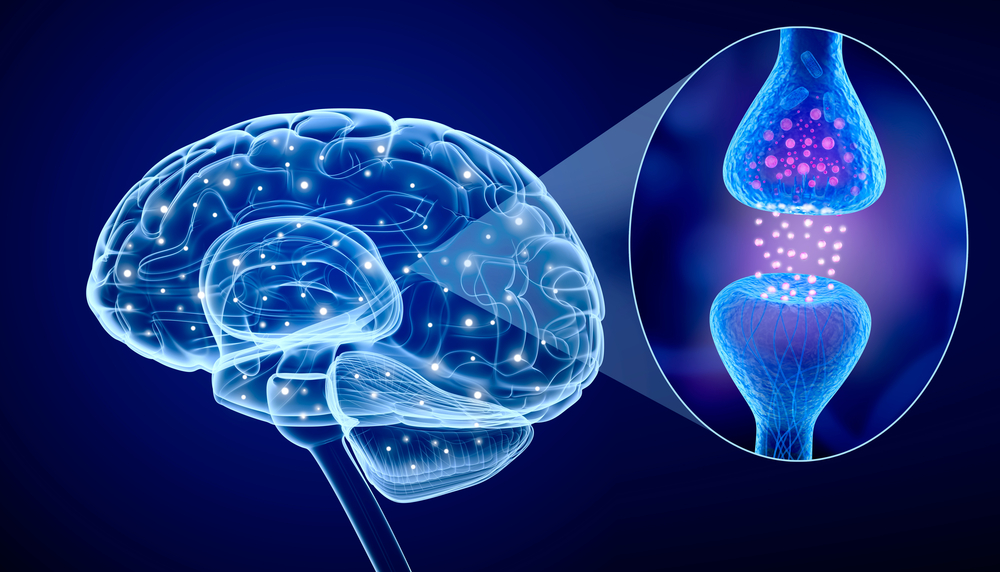
What Type of Attention Deficit Disorder is CBD Best Used for?
One must identify whether the ADHD involves the sympathetic nervous system (stimulating side) or whether the parasympathetic nervous system (restorative side) is most active.
*Sympathetic nervous system (SNS) = the part of the nervous system that makes us feel alert and stimulated. It’s heavily involved with the stress response.
*Parasympathetic nervous system (PNS) = the part of the nervous system that brings us back to normal after the SNS activates. It stimulates digestion and immune function and helps us relax.
Here’s an example of some of the symptoms common to ADHD that change depending on what part of the nervous system is hyperactive:
| Common ADHD Symptoms | Sympathetic Nervous System Dominance | Parasympathetic Nervous System Dominance |
| Inability to concentrate | Too distracted | Too bored |
| Digestive dysfunctions | Diarrhea and weight loss | Constipation and weight gain |
| Immune dysfunctions | Sick often | Rarely sick |
| Neurological dysfunction | Anxiety and insomnia | Depression |
This gets far more complicated, as ADHD can involve portions of both, so it’s best to talk with your health practitioner if you want further details.
CBD is Best for SNS-Dominant ADHD
Generally speaking, CBD is more likely to benefit SNS-dominant forms of ADHD. It supports most of the common symptoms, and in some patients, the underlying cause.
What Are the Conventional Treatment Options for ADD/ADHD?
1. Dietary Changes
Diet plays a major role in the symptoms of ADHD.
Nutrient deficiencies and blood sugar irregularities are common in ADHD sufferers. It’s best to speak with a registered dietitian or nutritionist before consuming any nutritional supplements.
2. Lifestyle Modification
One of the biggest problems with ADD and ADHD is that day-to-day activities at school or at work become difficult. This requires those affected to adapt their learning styles to something that’s going to work for them. This can involve tutoring sessions, interactive lesson structures, or homeschooling.
It’s also important to consider other factors of mental health to lower the burden of ADHD on performance.
Tips to Consider for Optimal Cognitive Function:
- Getting at least eight hours of sleep each night
- Exercising at least three times per week
- Meditating or spending time relaxing the mind at least once per day
3. Pharmaceutical Stimulants
Pharmaceutical stimulant medications are commonly used for treating the condition.
These drugs work by increasing dopamine levels in the brain by stopping enzymes from breaking it down. This increases the threshold needed to activate the reward center in the brain.
When the reward center is activated more easily, it becomes much simpler to focus on a given task. These drugs are highly effective for increasing attention and focus, but often come with a long list of negative side-effects that worsen the longer the drug is taken.
Common Drugs Used for Treating ADD/ADHD
- Concerta
- Modafinil
- Adderall
- Dexedrine
- Ritalin
- Vyvanse
How to Use CBD for ADHD Symptoms
Step 1: Source High-Quality CBD
The first thing to do is look for some high-quality CBD oil or CBD capsules.
CBD gummies are an excellent option for both children and adults alike. Just make sure to check the dose and store the gummies far out of your child’s reach, just like any other medication.
Finding high-quality CBD can be challenging — there are a lot of really poor-quality products out there thanks to the lack of regulation in this space.
Top-Rated CBD Oils For ADD & ADHD
- Royal CBD Oil
- CBDistillery CBD Oil
- Hemp Bombs CBD Oil
- Charlotte’s Web CBD Oil
- Kat’s Naturals Relax
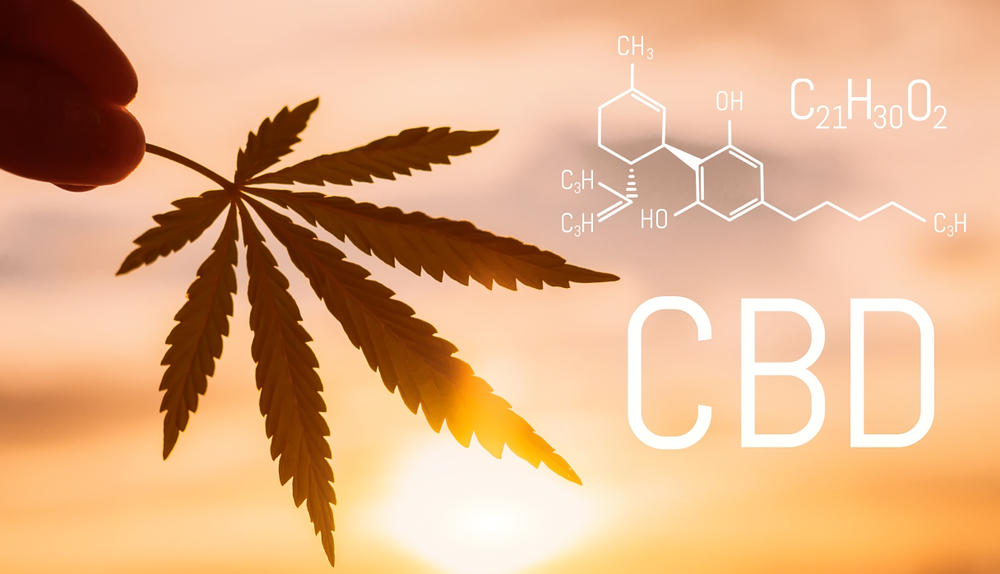
Step 2: Determine the Dosage
Determining the dosage of CBD can be a challenge for first-time users. You can use our CBD oil dosing guide to assess the daily dose of CBD based on your desired strength and weight.
When using CBD for the first time, we recommend taking the smallest applicable starting dose and building up slowly over the course of a week. This is a wise thing to do whenever starting any new supplement to see how it affects your individual body.
For ADHD, we recommend only taking CBD if you’ve discussed it with your medical practitioner. CBD and the other cannabinoids in the cannabis plant may interact with other pharmaceutical stimulants, antidepressants, or other medications.
Giving Smaller Doses to Children
- CBD oils are easily given in lower doses by measuring fewer drops of the oil.
- Gummies can be split into halves, thirds, or quarters with a knife to get the right dose measured out.
- Capsules, however, are very hard to split into smaller doses and, therefore, need to be bought already in the exact desired dose.
Below, we’ve outlined two general dosing recommendation charts — one for children and one for adults. Based on weight and desired strength, these charts provide a general starting point for dosing CBD oils and capsules.
Always start at the lowest strength and increase the dose gradually as needed.
Daily Doses of CBD by Weight and Strength (in mg) (Children)
| Weight (lbs) | Low Strength | Medium Strength |
|---|---|---|
|
30 lbs |
2.6 mg |
7.8 mg |
|
40 lbs |
3.6 mg |
10.8 mg |
|
50 lbs |
4.6 mg |
13.8 mg |
|
75 lbs |
6.4 mg |
19 mg |
|
100 lbs |
7.5 mg |
22.5 mg |
(Children’s doses calculated using Salisbury’s rule).
Daily Doses of CBD by Weight and Strength (in mg) (Adults)
Step 3: Take CBD Daily for One Month, Then Reassess
It’s important to be consistent with CBD (or any medication, for that matter) when treating ADD or ADHD. Symptoms may take several weeks of regular use before they begin to improve. Others find relief from symptoms almost instantly — it really depends on the individual.
A good step to take to track your progress is to make some baseline notes on the symptoms. If you’re visiting a health practitioner, this is something they will most likely be doing as well, to track any changes.
Answer the Following Questions in Your Notes:
- How are symptoms on a scale of 1–10?
- Is there a specific time of day when symptoms are the strongest?
- How many hours of sleep are you or your child getting each night?
- Is there anything that makes symptoms better or worse?
After a solid month of use, go back and answer these questions again. Are there any improvements? Is anything worse?
CBD can be used long-term without experiencing any negative side-effects.
Frequently Asked Questions
1. Is CBD Psychoactive?
No, CBD is completely non-psychoactive.
The main psychoactive compounds in the cannabis plant, THC and THCV, stimulate a special set of receptors in the endocannabinoid system that cause a change in neurotransmitter function — mainly serotonin. This is what gives us the characteristic “high” from marijuana.
CBD works very differently and will not produce a “high”.
The closest thing CBD brings to psychoactivity is making us feel relaxed and sleepy.
2. Is CBD Safe to Give to Children?
CBD is not psychoactive, and it is legal in Canada, the United States, and most of Europe.
It’s also safe to give to children — with caution, however.
In fact, many parents are using CBD oil to help their children with anxiety, autism, asthma, chronic stress, pain, insomnia, and motion sickness.
Children are very different than adults and tend to react strongly to health supplements. Oversight from a qualified health practitioner before giving any new supplement to a child is highly recommended.
Additionally, for obvious reasons, the dose is much lower for children than adults. We’ll get into how to calculate the dose for a child later.
Whenever giving children any new supplements, it’s wise to test them for allergies and sensitivities first. Here’s how to do so:
Testing Children for Allergies and Titrating Dose
- Place a small drop of the oil on the back of the child’s arm.
- Wait 30 minutes — if no skin rash forms, move on to step 3.
- Give the child one drop of the oil.
- Wait two hours — if no side-effects are noticed, move on to step 5.
- Give half the recommended (or converted children’s) dose.
If no side-effects emerge, you can build up gradually by half-doses each day until you either reach the desired effects — or they experience side-effects. If there are side-effects, simply revert back to a dosage that gave no adverse effects.

How to Calculate Children’s Dosage from Adult Doses
A major problem many parents will encounter after they give CBD to their children is that the bottles don’t list children’s doses — only adult doses.
Don’t fret, it’s actually quite easy to do calculate. Figuring out how to dose both herbs and pharmaceutical medicine hasn’t been a problem for centuries — early thinkers put together various techniques to calculate the doses based on age and weight.
There are many of these calculations that have been made over the years — but our favorite is “Salisbury’s Rule”. This rule uses the weight of the child in kg to determine the percentage of the adult dose to use.
For the sake of simplicity, here’s a quick reference for dosing children based on the adult dose of 10 mg for low-strength and 30 mg for medium-strength.
Sample Children’s Dosage Reference Chart
| Weight of The Child | Salisbury’s Calculation (% of Adult Dose) | Average Adult Dose | Children’s Dose (Using Salisbury’s Rule) |
| 30 lbs (13 kg) | 26% | 30 mg | 8 mg |
| 40 lbs (18 kg) | 36% | 30 mg | 11 mg |
| 50 lbs (23 kg) | 46% | 30 mg | 14 mg |
| 75 lbs (34 kg) | 64% | 30 mg | 19 mg |
| 100 lbs (45 kg) | 75% | 30 mg | 22 mg |
*Note: children under 30 lbs or five years of age should never use CBD without direct supervision by an experienced medical practitioner.
Conclusion: Can CBD Support ADHD?
The simple answer is yes, but with some caveats.
ADHD is a complex disorder involving multiple different organ systems and can have radically different symptoms for each person.
CBD is an excellent herbal supplement for calming the nervous system, supporting homeostasis, and treating specific symptoms.
Therefore, it’s useful for treating some of the symptoms of ADHD and may offer additional benefits for people presenting with sympathetic nervous system dominance.
Sources Used in This Article
- Loflin, M., Earleywine, M., De Leo, J., & Hobkirk, A. (2014). Subtypes of attention deficit-hyperactivity disorder (ADHD) and cannabis use. Substance use & misuse, 49(4), 427-434.
- Li, D., Sham, P. C., Owen, M. J., & He, L. (2006). Meta-analysis shows significant association between dopamine system genes and attention deficit hyperactivity disorder (ADHD). Human molecular genetics, 15(14), 2276-2284.
- Banerjee, S. P., Snyder, S. H., & Mechoulam, R. A. P. H. A. E. L. (1975). Cannabinoids: influence on neurotransmitter uptake in rat brain synaptosomes. Journal of Pharmacology and Experimental Therapeutics, 194(1), 74-81.
- Moldzio, R., Pacher, T., Krewenka, C., Kranner, B., Novak, J., Duvigneau, J. C., & Rausch, W. D. (2012). Effects of cannabinoids Δ (9)-tetrahydrocannabinol, Δ (9)-tetrahydrocannabinolic acid and cannabidiol in MPP+ affected murine mesencephalic cultures. Phytomedicine, 19(8-9), 819-824.
- Zulauf, C. A., Sprich, S. E., Safren, S. A., & Wilens, T. E. (2014). The complicated relationship between attention deficit/hyperactivity disorder and substance use disorders. Current psychiatry reports, 16(3), 436.
More Health Conditions to Explore
-
Conditions Related to Health Benefits
- CBD For Allergies: Can This Cannabinoid Ease Symptoms?
- Top 10 CBD Oils For Back Pain
- Can CBD Help With Menstrual Cramps?
- CBD for Sciatica: How It Works, Safety, Drug Interactions, & Best Products
- Is CBD a Viable Treatment for Cerebral Palsy?
- CBD Oil For Sleep
- CBD For Psoriasis: Can CBD Help to Alleviate Symptoms?
- Traumatic Brain Injury (TBI)
- Arthritis
- Anxiety & Depression
- Weight Loss
- ADD & ADHD
- Anorexia
- Alzheimer’s Disease & Dementia
- Addiction
- ALS (Amyotrophic Lateral Sclerosis)
- Antibiotic Resistance
- Asthma
- Atherosclerosis
- Autism
- Acne
- Bipolar Disorder
- Pain
- Crohn's Disease & Ulcerative Colitis
- Diabetes
- Epilepsy
- Endocrine Disorders
- Fibromyalgia
- Fatty Liver Disease
- Glaucoma
- Hypertension
- Heart Disease
- Huntington's Disease
- Inflammation
- Irritable Bowel Syndrome (IBS)
- Kidney Disease
- Migraine Headaches
- Muscle Recovery
- Multiple Sclerosis
- Motion Sickness
- Metabolic Syndrome
- Neurodegeneration
- Cancer
- Nausea
- Neuropathic (Nerve) Pain
- Osteoporosis/Bone Health
- Obsessive-Compulsive Disorder (OCD)
- Polycystic Ovarian Syndrome (PCOS)
- PTSD
- Prion/Mad Cow Disease
- Premenstrual Syndrome (PMS)
- Parkinson’s Disease
- Schizophrenia
- Sickle Cell Anemia
- Stroke
-
Conditions Related to Products
- Ranking The Top 13 THC Gummies By Category (Δ8, Δ9, Δ10, HHC, & More)
- Top 10 CBD Oils For Back Pain
- Everything You Need to Know About CBD Sunscreen
- Top 7 CBD Gummies For Sleep & Insomnia
- Top 7 CBD Gummies To Help With Anxiety (2022)
- Best CBD Gummies For Pain (Top-Rated Pain Gummies For 2022)
- Best Hemp Cigarettes (Top 5 Nicotine-Free Smokes)
- Top 5 CBD Lip Balms For 2022
- The Top 7 CBD Face Masks for 2022
- The Best CBD Inhalers For 2022 (& How to Use Them)
- Best Full-Spectrum CBD Vape Juice: What to Look For & How to Use It
- CBD Eye Drops: New Option For Glaucoma?
- CBD Oil For Dogs With Arthritis
- Best CBD Massage Oils In 2022
- Buyer's Guide To The Best CBD Vape Kits In 2022
- CBD Chocolate: Yes, It Exists & It's Just as Divine as it Sounds
- CBD Pre-Rolls & Cigarettes
- Terpene Concentrates
- Best CBD Soaps
- Best CBD Shampoo & Conditioner
- Best CBD Juul Pods
- CBD Isolate Oils
- Full-Spectrum CBD Oils
- Best CBD Lube
- CBD Honey
- CBD Transdermal Patches
- Best Dry Herb Vaporizers
- CBD Oil For Dogs With Epilepsy
- CBD Oil For Dogs With Anxiety
- CBD Oil For Dogs With Cancer
- CBD For Horses
- CBD Chewing Gum
- CBD Pain Cream
- CBD Oil For Cats
- CBD Oil For Dogs
- CBD Hemp Flower
- CBD Suppositories
- Best CBD Gummies for Pain, Sleep & Anxiety Reviewed (2022)
- CBD Teas
- CBD Vape Pens
- CBD Vape Oils
- CBD Coffee
- CBD Drinks & Shots
- CBD Crystals
- CBD Skincare
- Best CBD Oil & Gummies For Kids: Is CBD Safe for Children with Anxiety & ADHD?
- CBD Concentrates
- CBD Bath Bombs
- CBD Capsules
- CBD Sprays
- CBD Dog Treats
-
Conditions Related to Topicals
-
Conditions Related to Oils & Tinctures
-
Conditions Related to Edibles
- Top 7 CBD Gummies To Help With Anxiety (2022)
- Best CBD Gummies For Pain (Top-Rated Pain Gummies For 2022)
- CBD Chocolate: Yes, It Exists & It's Just as Divine as it Sounds
- CBD Honey
- CBD Chewing Gum
- Best CBD Gummies for Pain, Sleep & Anxiety Reviewed (2022)
- CBD Teas
- CBD Coffee
- CBD Drinks & Shots
- CBD Capsules
-
Conditions Related to Gummies
- Ranking The Top 13 THC Gummies By Category (Δ8, Δ9, Δ10, HHC, & More)
- Top 7 CBD Gummies For Sleep & Insomnia
- Top 7 CBD Gummies To Help With Anxiety (2022)
- Best CBD Gummies For Pain (Top-Rated Pain Gummies For 2022)
- Best CBD Gummies for Pain, Sleep & Anxiety Reviewed (2022)
- Best CBD Oil & Gummies For Kids: Is CBD Safe for Children with Anxiety & ADHD?
-
Conditions Related to Hemp Flower
-
-
Conditions Related to Terpenes
-
-
Conditions Related to Cultivation
-
Conditions Related to Concentrates
-
Conditions Related to Delta 8 THC
-
Conditions Related to Delta 9 THC
-
-
-
-
Conditions Related to CBD
- Everything You Need to Know About CBD Sunscreen
- Top 7 CBD Gummies For Sleep & Insomnia
- Top 7 CBD Gummies To Help With Anxiety (2022)
- Best CBD Gummies For Pain (Top-Rated Pain Gummies For 2022)
- Best Hemp Cigarettes (Top 5 Nicotine-Free Smokes)
- Top 5 CBD Lip Balms For 2022
- The Top 7 CBD Face Masks for 2022
- The Best CBD Inhalers For 2022 (& How to Use Them)
- Best Full-Spectrum CBD Vape Juice: What to Look For & How to Use It
- CBD Eye Drops: New Option For Glaucoma?
- CBD Oil For Dogs With Arthritis
- Best CBD Massage Oils In 2022
- Buyer's Guide To The Best CBD Vape Kits In 2022
- CBD Chocolate: Yes, It Exists & It's Just as Divine as it Sounds
- CBD Pre-Rolls & Cigarettes
- Best CBD Soaps
- Best CBD Shampoo & Conditioner
- Best CBD Juul Pods
- CBD Isolate Oils
- Full-Spectrum CBD Oils
- Best CBD Lube
- CBD Honey
- CBD Transdermal Patches
- CBD Oil For Dogs With Epilepsy
- CBD Oil For Dogs With Anxiety
- CBD Oil For Dogs With Cancer
- CBD For Horses
- CBD Chewing Gum
- CBD Pain Cream
- CBD Oil For Cats
- CBD Oil For Dogs
- CBD Hemp Flower
- CBD Suppositories
- Best CBD Gummies for Pain, Sleep & Anxiety Reviewed (2022)
- CBD Teas
- CBD Vape Pens
- CBD Vape Oils
- CBD Coffee
- CBD Drinks & Shots
- CBD Crystals
- CBD Skincare
- Best CBD Oil & Gummies For Kids: Is CBD Safe for Children with Anxiety & ADHD?
- CBD Concentrates
- CBD Bath Bombs
- CBD Capsules
- CBD Sprays
- CBD Dog Treats
-
-
Conditions Related to THC-O
-
-
Conditions Related to Joint Health
-
Conditions Related to Pain Disorders
- Top 10 CBD Oils For Back Pain
- Can CBD Help With Menstrual Cramps?
- CBD for Sciatica: How It Works, Safety, Drug Interactions, & Best Products
- Traumatic Brain Injury (TBI)
- Arthritis
- Pain
- Fibromyalgia
- Glaucoma
- Inflammation
- Kidney Disease
- Migraine Headaches
- Multiple Sclerosis
- Neuropathic (Nerve) Pain
- Premenstrual Syndrome (PMS)
- Sickle Cell Anemia
-
Conditions Related to Autoimmune Disease
-
Conditions Related to Cognitive Health
-
Conditions Related to Metabolic Disorders
-
Conditions Related to Psychological Disorders
-
Conditions Related to Muscles & Bones
-
Conditions Related to Nervous System
- CBD for Sciatica: How It Works, Safety, Drug Interactions, & Best Products
- Is CBD a Viable Treatment for Cerebral Palsy?
- CBD Oil For Sleep
- Traumatic Brain Injury (TBI)
- Anxiety & Depression
- ADD & ADHD
- Anorexia
- Alzheimer’s Disease & Dementia
- Addiction
- ALS (Amyotrophic Lateral Sclerosis)
- Autism
- Bipolar Disorder
- Epilepsy
- Huntington's Disease
- Inflammation
- Migraine Headaches
- Multiple Sclerosis
- Motion Sickness
- Neurodegeneration
- Neuropathic (Nerve) Pain
- Obsessive-Compulsive Disorder (OCD)
- PTSD
- Prion/Mad Cow Disease
- Parkinson’s Disease
- Schizophrenia
-
-
Conditions Related to Reproductive Health
-
Conditions Related to Hormones & Endocrine
-
Conditions Related to Skin Health
-
Conditions Related to Cardiovascular System
-
Conditions Related to Digestive System
-
Conditions Related to Genetic Disorders
-
Conditions Related to For Children

